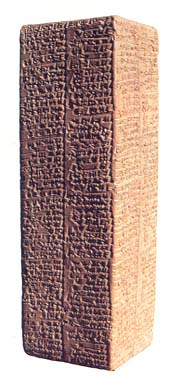A 3,500-Year-Old Cuneiform Inscription From a Syrian Kingdom May Tell Us Who the HÉ abiru Were

A new king of an obscure kingdom called Tikunani has just been discovered. Tikunani was situated somewhere between the Tigris and Euphrates rivers near the modern Syrian-Turkish border in about the middle of the second millennium B.C. Its king was named Tunip-Tes
We know this because Professor Mirjo Salvini, a distinguished Italian scholar who can read cuneiform the way you and I read a newspaper, has published the text of a remarkably preserved square prism (photo, right) covered with cuneiform characters. Although extraordinary photographs of the prism are available to all, so that anyone who is able can check Salvini’s readings, the prism itself cannot be seen. It is in unnamed private hands, according to Salvini’s The H
The prism stands about 8-½ inches high. On the bottom is a colophon, which describes the prism’s contents: a list of 438 workers who served Tunip-Tes
The king’s name is Hurrian. The name of the month used to date the baked clay document is Babylonian. Assyrian influence is also evident. Tikunani was also somehow connected to the adjacent Hittite kingdom.
Already a library member? Log in here.
Institution user? Log in with your IP address.

